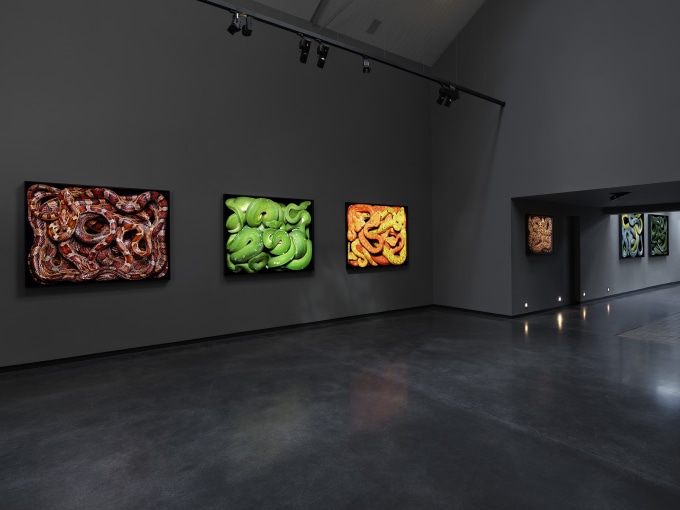“I achieve my goal when I have people finding something strangely beautiful that they would not think so. I guess art is there to open people’s eyes and minds on things that they could not think could be that way.” – Guido Mocafico
Hamiltons is pleased to announce the first exhibition with Guido Mocafico in eight years. The show comprises eleven large format, unique, pigment prints from Mocafico’s highly acclaimed Serpens series.
Guido Mocafico is neither a scientist nor a collector of curiosities, but a photographer and lover of art who partakes in the vocabulary and colours of nature. He regards jellyfish, snakes, and tarantulas as the creation of an unparalleled artist. A strange sensation emanates from his images, which combine a vision of the unknown with a large dose of mystery – and fear, for these animals secrete a toxic substance that when injected by sting or bite can cause death. With just the right amount of distance, Mocafico offers a contemporary view of the demiurge, showing us that we can live in a world of illusion.
What animal has inspired as much dread, as many legends and, indeed, as much revulsion and terror as the snake? Demon, divinity, sacred animal protector, ancestor – the nature and importance of this creature’s role has changed throughout history. Among the 2,700 known species, few are dangerous, let alone lethal, to humans, but prejudices prevail.
“There is minimalism and maximalism in my images. They are straight to the point but they are very complicated. I like the troubling aspect of doing something that is at once a very simple and yet complicated image.”
He often chooses confrontational subjects such as guns, snakes or spiders to incite his audience. As Mocafico explains, “a photograph has to provoke a reaction”. As a master of technique, Guido uses lighting and composition alongside the subject matter to rouse a combination of repugnance and reverence, researching his motifs extensively to gain an in-depth understanding of the entities he photographs. It is this intense and detailed appreciation for the unnoticed but essential features of his subject which makes his works compelling studies of beauty in the unexpected. “If I had to define beauty, I’d say it has to contain an element of darkness or danger.”






